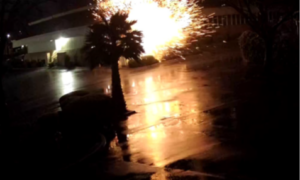President Biden approved California’s request for a major disaster declaration April 14 to help recovery efforts after early February winter storms caused flooding and mudslides across the state.
Gov. Gavin Newsom’s request for a federal emergency declaration was made in February and expanded in March after highways and roadways were damaged, resulting in significant costs to local and state governments.
“This declaration brings in more resources for local communities across the state recovering from the widespread impacts of these storms,” Mr. Newsom said in a statement Sunday.
Starting on Feb. 4, a strong atmospheric river storm impacted much of the state, resulting in at least 11 deaths. The storm caused widespread flooding, power outages, school closures, and damage to roadways.
Hundreds of thousands of residents lost power during the storm surge, which swelled rivers across the state and sent boulders and debris across highways and roadways. Several people were rescued after their vehicles were swept up in fast-moving currents as flooding developed over the three-day event.
In addition to the deaths as a result of the storm, hundreds of homeless people were relocated, according to reports.
Up to five inches of rain fell across most of the state, with up to 10 inches in the coast mountain ranges and Los Angeles basin. Some areas of the San Gabriel Mountains in Southern California received 10 to 15 inches of rain.
Rainfall in downtown Los Angeles is on track to set a new record, according to the National Weather Service. The city has experienced one of its wettest years on record.
Counties included in the emergency declaration include Los Angeles, Orange, Riverside, San Bernardino, San Diego, San Luis Obispo, Santa Barbara, Ventura, Alameda, Butte, Glenn, Lake, Mendocino, Monterey, Sacramento, San Francisco, Santa Cruz, Sonoma, and Sutter.
The presidential declaration is intended to give targeted tax relief to people and businesses impacted by the state-declared emergencies and disasters.
The declaration also makes federal public assistance available to help state, tribal, and local governments cover the costs of emergency response and recovery efforts. It also includes funding for hazard mitigation efforts statewide, according to the California Governor’s Office of Emergency Services.













